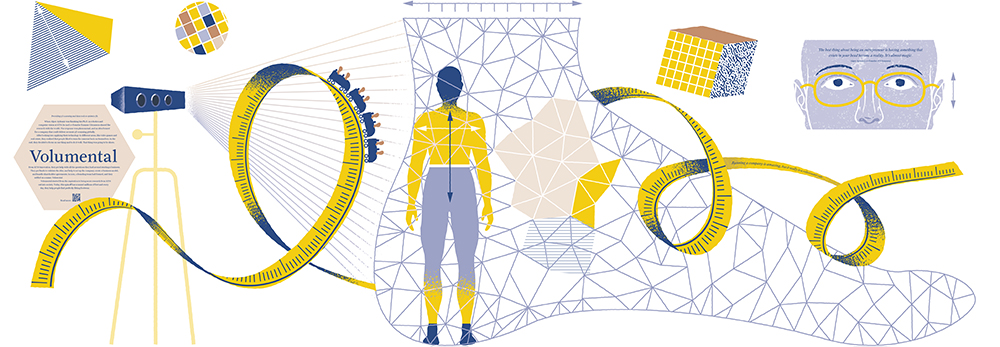Volumental knows everything about your feet
It started when a group of researchers realized that they could use existing technology to obtain data for their research. The result was the company Volumental, which 3D-scans feet to create perfectly fitting shoes.
Alper Aydemir was a PhD student at the Department of Robotics, Perception and Learning at KTH. He and his colleagues needed data to for example make 3D visualizations or test algorithms, but lacked enough material. The solution was a website where anyone with a Microsoft Kinect camera could film their surroundings and get the film back in 3D.
The response took them by storm, and an idea to start a company that could deliver accurate 3D scanning to the world began to grow.
They wondered if the technology could be used for video games or apartment screenings, but soon realized that the most common motive people wanted to scan was themselves. Eventually, they found their focus: their thing was going to be shoes.
In this journey, they contacted KTH Innovation, and got help with all the questions they had about starting a business. For example, they received funding to validate the idea, help to develop a working business model and support in managing shareholder agreements. In 2012, a founding team had been formed and they decided on a name: Volumental.
Today, they have scanned millions of feet, and every day they help more people find perfectly fitting shoes.
Milestones
January 2012
First meeting with KTH Innovation about an idea to collect real data via Microsoft Kinect. They were then developing a plug-in to be launched within two months. They had partnerships and a grasp of the competition. The first step was to double-check agreements and ownership, and ensure that the technology actually worked.
June 2012
Volumental got funding within the VFT-1 program , which is managed by KTH Innovation.
August 2012
The first version of the platform is released. Now, users can upload movies from their Kinect cameras directly to the platform. The plan is to evaluate what users actually upload. At the same time, the team uses the funding they received to bring in a consultant to conduct market research.
October 2012
The market research is complete and some interesting areas stand out; conference rooms, apartment sales and office space.
November 2012
The company Volumental AB is formed. The team isgets support from KTH Innovation to develop shareholder agreements.
February 2013
Volumental receives additional funding within the VFT-1 program , this time to analyse opportunities to protect their intellectuaö property.
March 2013
KTH Holding invests in Volumental.
May 2013
First customer secured. KTH Innovation's support ends and Volumental joins the incubator Sting, a partner of KTH Innovation.
Visit Volumental's room at Teknikringen 1
At Teknikringen 1, KTH Innovation's home on KTH Campus, you can find a meeting room named after Volumental. There you can see this illustration, inspired by Volumental's story, in full size. The illustration was created by Jens Magnusson.

